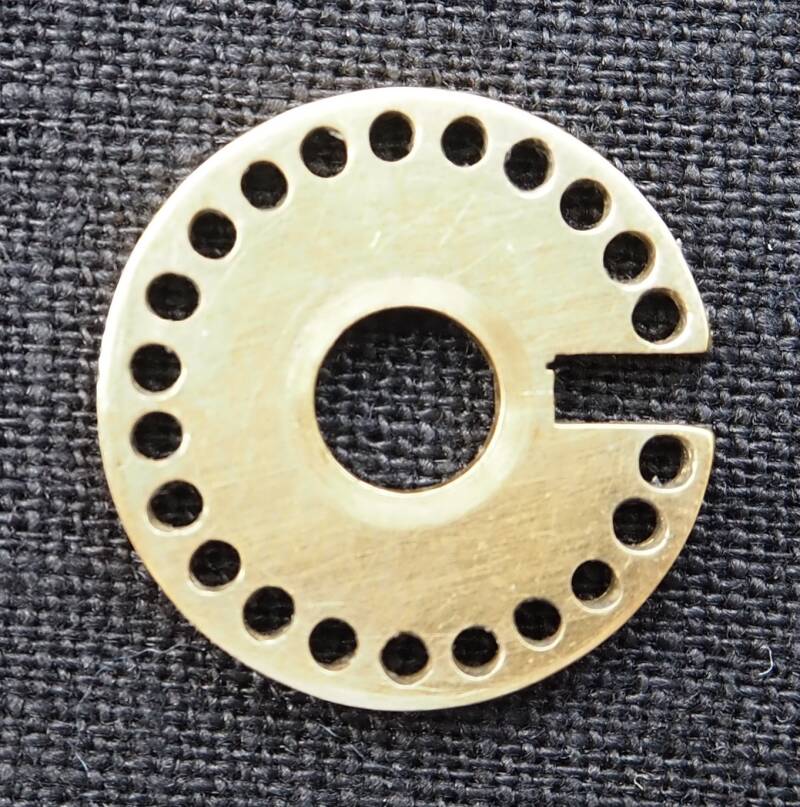Programmable Roman combination lock
The credits related to the research of the programmable Roman combination lock go to Salvatore Falco. Thanks for the innovative research, allowing to bring this ancient technology back to life.
Sources
The following archaeological sources relate to the use of combination locks in antiquity:
- two wooden chests from Pompeii and Herculaneum
- the top plate of a combination lock, on display in the Crypta Balbi Museum in Rome
- a cylindrical lock with an intact internal mechanism from a private collection
Operation
A functional reproduction of the combination lock by Marco Di Francesco.
Picture 1 shows the top of the combination lock, picture 2 shows the bottom.
First, the user must turn the four handles (red rectangle) to align them with the correct letter (blue circle).
Once this is done, one you can see at the back that the notches in the 'circles with holes' will align with the pin next to them. Only after proper alignment, the user can move the knob in the center (black rectangle) to the side, allowing the lock to be opened. The hook of the latch (green rectangle) will then be released, and the latch can be opened.
Reproduction
Top
Each handle can be aligned with one of the 23 letters of the Latin alphabet. The archaeological finds clearly show that letters, and not numbers, were used. Because 23 letters must be chosen for each of the 4 handles, there are a total of (23)4 = 279841 possibilities (= permutations).
Bottom
- Picture 1: the letters are not in the correct position, the notch in the 'circle with holes' does not align with the pin next to it, hence the lock can not be opened.
- Picture 2: the letters are now in the correct position, the notch in the 'circle with holes' aligns with the pin next to it, hence the lock can be opened.
- Picture 3: the knob in the center has been moved aside, and therefore the pin (see top center) no longer anchors the hook of the latch. The lock is now open.
Latch
Once the lock is opened, the hook of the latch can be removed from the combination lock mechanism.
Opening the lock
This video shows the subsequent steps to open the lock (Dutch only).
Disassembled bottom
Pictures 1 & 2: from top right and clockwise:
- a complete assembly
- the wedge has been removed
- the wedge and the pin for reprogramming the lock have been removed
- the wedge and the reprogramming mechanism (the pin + the circle with holes) have been removed
Picture 3:
- the wedge, the reprogramming mechanism (pin + circle with holes), and the handle with the axle have been removed
Programming the letter lock
When the notch in the 'circle with holes' aligns with the pin, the lock can be opened. The pin (picture 3) is used to program another letter position.
Steps to reprogram the combination lock
This video shows the subsequent steps to reprogram the combination lock (Dutch only).


















